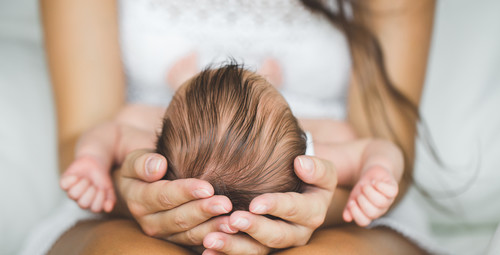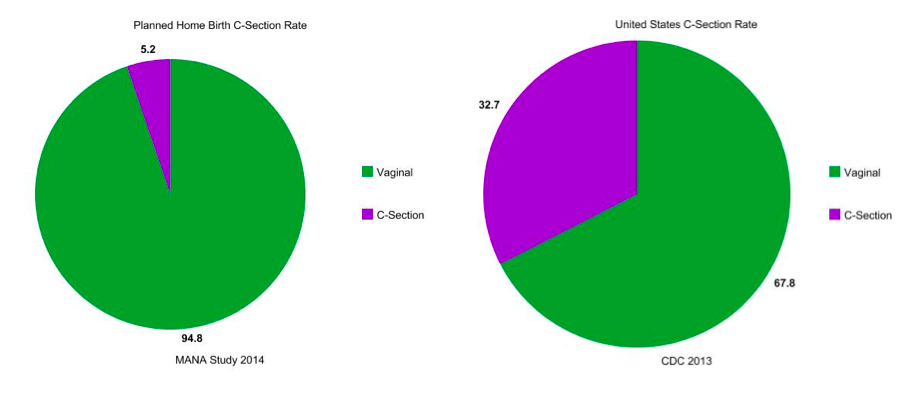Midwives often say that nonhospital birth is “at least as safe” as giving birth in the hospital. Most mothers who choose nonhospital birth strongly agree; according to a research study I did in Spring 2015, here is the breakdown:
Yet, when I analyzed all of the studies that the Midwives’ Alliance of North America (MANA) says comprise the best evidence for the safety of home birth, I found that every study that looked at nonhospital birth in the United States (and many of the studies that looked at other countries, as well) reported much higher death rates for babies when compared to similar hospital births.
(Read my entire report for more details.)
So, how is it that midwives can claim that it is “at least as safe” to give birth at home or in a nonhospital birth center, compared to a hospital?
Here is how:
When obstetricians, nurses, and epidemiologists talk about “safety,” they are talking about survival. They are talking about a new mother bringing home a healthy baby, regardless of how that baby is born.
When midwives talk about “safety,” too often they are talking about avoiding c-sections. To them, a vaginal birth is such an important goal, whether or not fewer babies survive is ignored.
I have heard many women say that when they were pregnant, they thought that having a c-section was the “worst possible outcome.” I remember feeling this way myself! If you had asked me what I was most worried about when I was pregnant the first time, I would have said having a c-section. My baby dying or being harmed never crossed my mind at all. Babies surviving birth is taken for granted in the U.S.
When we bemoan our high c-section rate, do we forget that c-sections help babies survive birth? Before the days of readily available c-section, it was common for perfectly developed babies to die due to accidents during labor and birth. In those days, everyone knew someone who had lost a child at birth. Now, it is such a rare outcome, many pregnant women never even consider for a second that they could possibly lose a baby in a birth complication.
When we midwives bemoan our high c-section rate, we often focus on how women can give birth vaginally. We are made to do this! But c-sections are more often done for the baby’s sake. It’s not really a question of whether your body can get a baby to pass through itself; it is a question of whether this particular baby might be being harmed in the process. How much of a triumph is it to give birth vaginally if you end up permanently harming your child to do so?
Having your baby at home doesn’t actually decrease the chance that your baby will need to be born by c-section, but it does decrease your chances of having a c-section. The fact is, most babies born at home will survive the kinds of in-womb conditions that would earn them a c-section in a hospital. Some babies who would have been considered “needing” a c-section if they were in hospital end up born vaginally anyway. Most of them will be ok born vaginally: most will survive, and most of them will be fine. The higher death rate and brain damage rate at home accounts for the ones who the midwife thought would be fine, but they were not.
I understand that there is an issue with unnecessary c-sections in hospitals. But in midwifery, we have focused on avoiding the pain of c-section to the exclusion of protecting women from a much greater pain: the pain of losing a child.
Further Reading: Babies born at home at ten times the risk of Apgar 0 at 5 minutes of age





Also, keep in mind, the c-section comparison MANA offered up is misleading. 31% is the overall c-section rate, all risk levels, repeat cesareans, everything. Majority of the women in the MANA study were low risk AND have had a previous vaginal birth (and no cesarean history). A similar group of women giving birth in a hospital would have a cesarean rate much lower than 31%. The primary cesarean section rate for women (low and high risk) giving birth in a hospital who have had a previous vaginal birth is 11.5%. So yeah…. the 5.2% versus 31% comparison is misleading.
Great post, definitely will be sharing!
Dani, thank you for pointing this out! I am planning to do another post that breaks down the c-section rate so women can see that just because the national average is 31% doesn’t mean that they personally have a nearly 1-in-3 chance of having a c-section. That idea is what drives a lot of women toward nonhospital birth in the first place, but it’s far from true.
I was going to bring up the primary c-section rate as well. The primary c-section rate in the US is much lower than the total c-section rate. From this CDC report, the primary c-section rate appears to be closer to 20%, but nonetheless, it’s NOT 33%!
http://www.cdc.gov/mmwr/preview/mmwrhtml/mm5402a5.htm
Also, when looking at c-section rates for OOH midwives – a comparison of c-section rates between OOH midwives and CNMs in the hospital is probably better at determining how much a homebirth reduces the chance of a c-section. CNMs have a c-section rate of about 9-11%. So it really isn’t as dramatic 33%/5% – it’s closer to 10-15%/5% hospital c-section rate vs home birth(for low risk laboring women)
http://www.midwife.org/acnm/files/ccLibraryFiles/Filename/000000004436/ACNM-Data-Table-052714-abbreviated.pdf
If this slight increase in cesarean rate saves babies’ lives – why wouldn’t we support it?
Thank you Liz! Excellent point!
You could even argue that in the US, planned home birth should have a higher surgical birth rate than hospital CNMs, because a hospital CNM is more likely to risk out appropriately than many largely unregulated home birth midwives who view everything as a “variation of normal”.
Like I said in my email Leigh, I totally agree with you on the safety of US home birth – but I think that something is missing from this discussion, and that’s the psychological safety of birthing women as well as their and their babies physical safety.
To truly address the reasons why women choose potentially unsafe home birth situations and attendants, we need to look as their – usually unconscious – drive to protect their mental health, when faced with disrespectful, intrusive and abusive medical environments (I’m not saying that all hospitals are like that at all, mine isn’t, but it can be a major factor).
Mental health doesn’t sound that important, compared with the physical safety of mother and child, but when you consider the affects of post natal depression, psychosis and PTSD, as well as bonding issues, you start to see that the effects of poor psychological/mental health support in traditional maternal hospitals is a major factor pushing women towards less safe birthing options.
Consciously, mental health probably isn’t a factor for women choosing their birthing environment, but un-consciously, you can bet your ass that privacy and respect for boundaries are right up there with perinatal mortality statistics when making their choice. Our sense of safety includes many other factors than simple physical safety.
Thank you for your comment. I totally support any efforts to make hospital care better and improve access to all manner of services. There is plenty of room for improvement!
I will never again let myself forget to keep it in perspective, though. Nothing is worse for a mother’s mental health than losing a child.